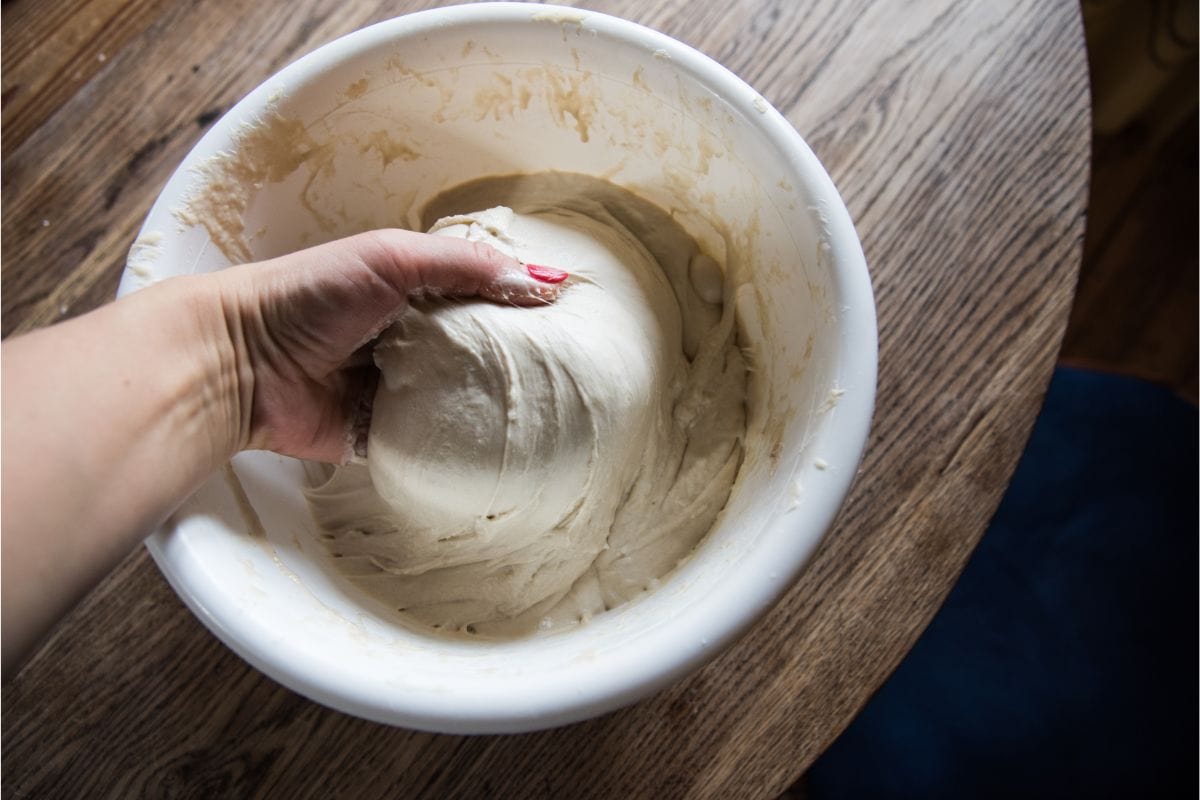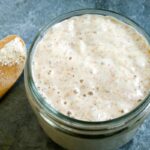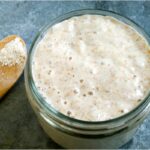One of the best things about a sourdough starter is how resilient it is.
You can leave a starter for a couple of days (or even a few weeks) and they’ll still be in good condition when you return.
But sometimes it seems like your starter has become inactive or is completely dead. How can you tell if your starter has died?
Well, a sourdough starter is dead when it is unresponsive to regular feedings. Regular feedings are key as a neglected starter is sure to fail.
If this happens then the active starter will require refreshments in order to be brought back to life.
You may also notice discoloration or mold in your starter.
If this occurs, I recommend throwing out your active starter and making a new starter.
In our article I will be looking at more signs that your starter has died and what to do next to bring your starter back to life.
How To Tell If Your Sourdough Starter Is Dead
Take A Look At Your Starter Fermentation Activity After Feeding
Check for signs of life after feeding your starter.
Do you notice any rise, gas, air bubbles, or a bubbly surface in your sourdough starter? If you don’t notice these then the starter may be too cold.
Try putting your dead starter in a warmer area to bring it back to life.
If there are no signs of fermentation then your starter is most likely dead or nearly dead.
This is the case even if the color of your starter looks fine.
This can be fixed with regular feedings of your dead starter as well as keeping it warm.
Smell It
Smelling your sourdough starter is one of the best ways to check if you have a healthy sourdough starter.
A healthy sourdough starter will have a pleasant smell that is slightly alcohol and possibly vinegary.
The most telling sign that your sourdough starter is off is a bad smell.
A dead starter will commonly smell like paint stripper, dirty socks, strong cheese, or vomit.
However, this doesn’t mean that your starter is completely dead. It just means the starter has gone bad.
If your starter begins to smell foul then it means then the starter is growing nasty bacteria.
To correct a starter that is starting to smell pretty funky you should continue with regular feedings.
You should also adjust the temperature of the starter to 25–34 degrees Celsius. You should see your starter recover in a few days.
Check The Color
A starter that begins to display strange colors like blue, orange, pink, or yellow are signs of bad bacteria that has taken over.
This is most likely visible mold and is a sure sign that your starter has died.
You should probably start over if this happens but it is still possible to revive it. Take some of the good bits and revive it with plenty of flour and water.
The good bacteria should combat the bad after a couple of days of regular refreshments.
If you touch a moldy starter make sure to thoroughly wash your hands and don’t touch your face.
Have You Baked Your Sourdough Starter?
Heating a starter too hot is the only way you can kill it permanently.
Once the starter temperature exceeds 60C (140 °F) then the lactic acid bacteria and the wild yeasts become permanently inactive.
Be careful if you keep your starter in the oven.
It’s all too easy for other people living in your house to turn the oven off without knowing what’s inside!
If this happens and your starter dries out then you will have to try again.

What Do I Do If My Sourdough Starter Is Dead?
Firstly, it’s important to make sure that your sourdough starter is actually dead.
You are likely to spot some signs of life.
You will need to discard half the the starter and stir in some fresh flour and water to revive the starter.
If your starter is totally dead because it’s too moldy or hot then you will have to discard your starter and start over.
What To Do If Your Sourdough Never Rises
If you have used a reliable sourdough starter recipe but are not seeing bubbles or other signs of activity then the water may be the issue with your starter.
Sourdough Starter Myths
There are a few famous myths about what causes a sourdough starter to die. Let’s take a look at a few:
Switching to wholemeal flour will kill your starter.
This is not true. Instead, your starter will just take a couple of days to adjust.
Non-organic flour will kill your starter.
You can use other flours like wheat flour, whole wheat flour and rye flour.
Stirring with a metal spoon or putting it in a metal bowl will kill your starter.
Freezing your starter will kill it.
Does Tap Water Kill A Sourdough Starter?
Water is an important ingredient for a sourdough starter.
You can use tap water for your starter if it’s safe to drink.
But tap water can be very chlorinated in some places and this kills both the nasty bacteria and the good bacteria and yeast in the starter.
Pouring some tap water into a jug and letting it sit for a while will let the chlorine evaporate.
You can then use this water in the starter.
However, the starter will contain little bacteria and yeast.
Little bacteria and yeast means there is little water activity. This means the starter will take some time to rise.
Try using bottle water if you are still struggling to promote activity in your starter.
Do You Have To Feed Your Starter Every Day?
A sourdough starter needs to be fed every day at room temperature.
But you can feed your starter once a week if it’s in the fridge.
It is also possible to take a break from your starter.
Once you have an established starter you can take a break from it.
This tends to happen after 10 days.
You can then put your starter in the fridge after a large feeding and it should last for two weeks without feeding.
But prior to adding the starter to your bread dough you will need to feed your starter a couple of days before.
Final Thoughts
I hope this article has helped you identify if a sourdough starter is dead or if your starter just needs a bit of TLC to be brought back to life.
A sourdough starter is super resilient and it takes a lot to kill a starter for good.
Common signs of an off sourdough starter include a foul smell and an unusual color. Good luck on your sourdough journey!








